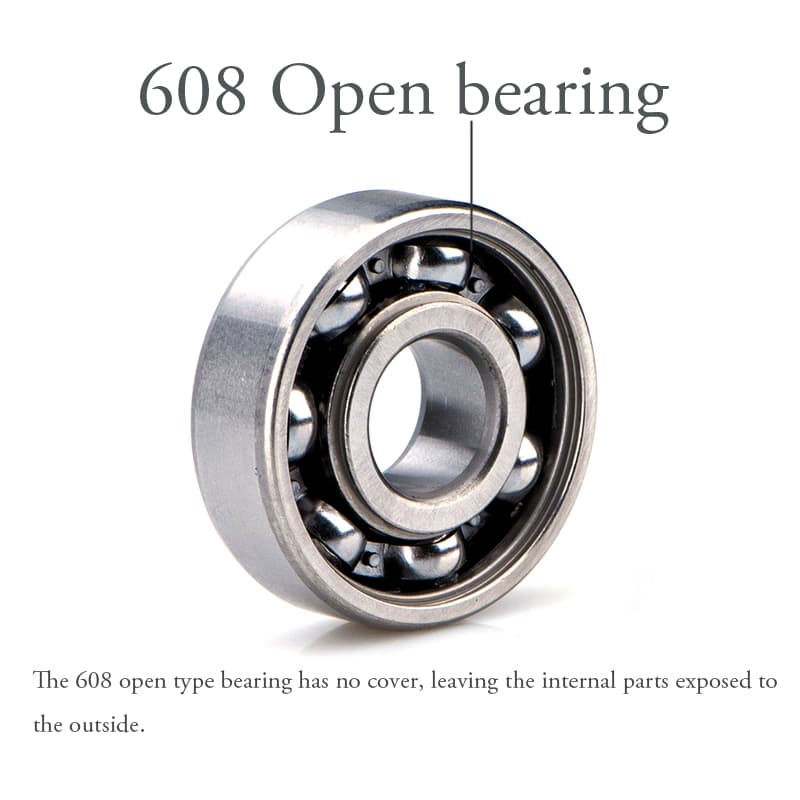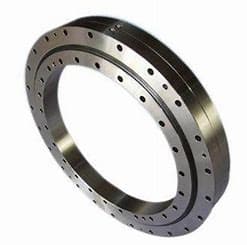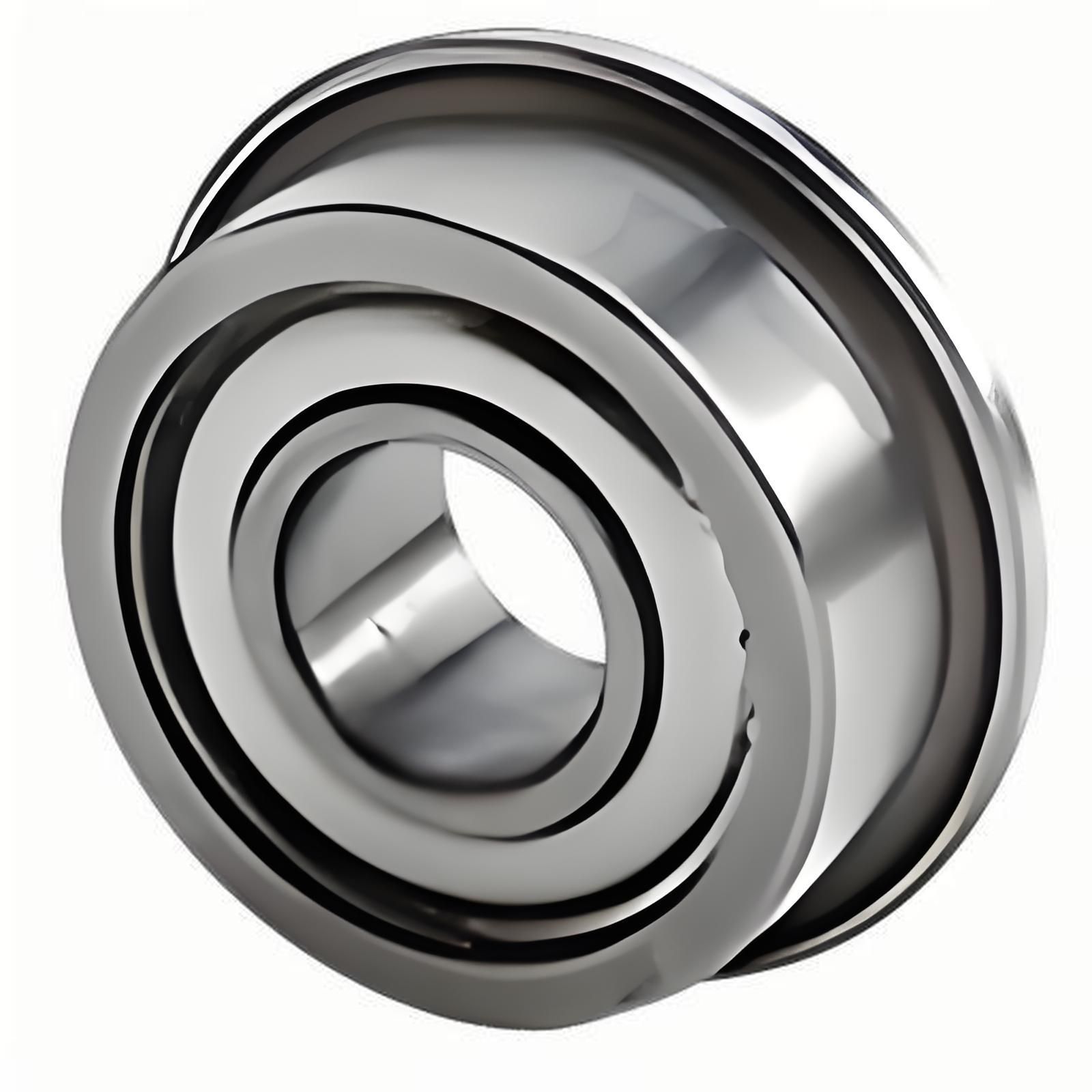How to Clean Ceramic Bearings?
Curious about maintaining ceramic bearings? Questions like “What makes ceramic bearings better?”, "What can I use to clean ceramic bearings?" or...

Bearings are essential components in machines, allowing them to rotate smoothly and efficiently. In industries like steel production, kilns, and gas turbines, temperatures can reach intense levels. Choosing the right bearing is essential in these conditions.
In this blog, we'll discuss how to pick the right materials and what to think about when using bearings in high temperatures. We'll also share practical tips for selecting the best types of high-temperature bearings for your needs.
Understanding Temperature Limits of Bearing Materials
| Bearing Type | Temperature Limit | Materials |
| Ceramic Bearings | Up to 1600°C | Silicon nitride (Si3N4), Zirconia (ZrO2) |
| Hybrid Bearings | Up to 500°C | Steel rings with ceramic balls |
| High-Temperature Steel Bearings | Up to 500°C | Martensitic stainless steel (SUS440C), Deposition hardening steel (SUS630) |
Effect of Extreme Heat on Bearing Components
Types of Loads and Their Impact on Bearing Selection
Speed Considerations in High Temperature Bearings
High temperature bearings used in high-speed applications face the challenge of generating more friction and heat. This makes it essential to use materials that can withstand both high rotational speeds and the thermal stress that comes with it.
A balance often exists between load capacity and speed. High-speed tool steel bearings like M50 are designed to work in extreme conditions. They provide a balance between fast performance and durability under heavy loads.
Challenges of Lubricating Bearings at Elevated Temperatures
High temperatures can cause traditional lubricants, like mineral oils, to break down. When this occurs, friction and wear escalate. This leads to reduced performance and a shorter service life for high-temperature bearings.
When choosing a lubricant, you have two main options: grease and solid lubricants. High-temperature greases, like fluorinated grease (such as EXSEV-EX), are effective in certain situations. They work well where liquid lubricants can be used.
Solid lubricants like molybdenum disulfide (MoS2) and tungsten disulfide (WS2) are better for high temperatures. They don’t break down easily and provide good lubrication.
Selecting the Right Lubrication for Different Temperature Ranges
| Temperature Range | Recommended Lubrication |
| Up to 260°C | Fluorinated grease can be effective. |
| Exceeding 260°C | Layer lattice materials (solid lubricants) are required, but they may not be suitable for clean environments. |
| Above 500°C | Non-lubricated ceramic bearings are often used due to the lack of effective lubricants. |
Advantages:
Disadvantages:
Applications:
Hybrid Bearings
Advantages:
Combines the strength and durability of steel rings with the low-friction and high-heat resistance of ceramic balls.
Applications:
High-Speed Tool Steel Bearings
Materials:
M50, BG42, and XD16N steels.
Advantages:
Applications:
Coefficient of Thermal Expansion (CTE)
Different materials expand at different rates when heated. Ceramics have a small expansion rate, while steel has a larger expansion rate.
Maintain the proper clearance for high-temperature bearings. This helps prevent problems like increased internal pressure and bearing seizing.
Managing Clearance in High Temperature Conditions
Extra space should be allowed at normal temperatures. This helps to account for material expansion as temperatures rise.
Incorrect clearance can lead to high temperature bearings misalignment, increasing friction and wear. This ultimately reduces the lifespan of the high temperature bearings and increases the risk of failure.
Ceramic Materials vs. Stainless Steel
Silicon Nitride (Si3N4) is resistant to most acids and alkaline solutions. However, it can be affected by hydrofluoric acid.
Zirconia (ZrO2) and Silicon Carbide (SiC) provide excellent corrosion resistance. They work well in both highly acidic and alkaline environments.
Selecting the Right Bearings for Corrosive High Temperature Conditions
Ceramic materials are great for environments with corrosive gases, chemicals, or saltwater. This makes them perfect for use in chemical plants and marine industries.
Bearings for Clean Environments
Using martensitic stainless steel (SUS440C) and polymer solid lubricants helps reduce particle emissions.
High temperature bearings are ideal for use in semiconductor manufacturing, food processing, and cleanroom environments.
Bearings for Vacuum Environments
For vacuum conditions, stainless steel (JIS SUS630) or ceramic bearings are preferred options.
In vacuum environments, common lubrication choices include WS2 and MoS2.
When using high-temperature bearings in vacuum environments, remember to consider the vacuum pressure and temperature changes.
Key Characteristics
Strengths and Weaknesses
Material Composition
Advantages
Best Uses
Impact of Temperature on Bearing Fit
Different coefficients of thermal expansion affect how high temperature bearings fit during operation. Materials that expand at different rates can lead to changes in clearance, which may impact performance.
Maintain the right clearance for high-temperature bearings during installation. This is especially crucial during operation at high temperatures. This helps maintain alignment and reduces the risk of overheating or seizure.
Hoop Stress and Bearing Rings
Ensuring that the hoop stress on high-temperature bearing rings doesn’t exceed the yield stress at high temperatures is crucial. Too much hoop stress can cause the rings to deform or fail, which compromises their integrity and performance. Proper design and material choice are essential to maintain safe operating conditions and extend the high temperature bearings' lifespan.
Preventive Maintenance for High-Temperature Bearings
Routine inspections are important for high temperature bearings. Regularly check for wear, lubricant levels, and bearing clearance. This helps catch potential problems before high temperature bearings get worse.
Lubricant Management: Reapply lubricants when needed and replace high temperature bearings at the first sign of wear or damage. Timely maintenance can prevent unexpected failures and prolong the high temperature bearings' lifespan.
Early Detection of Bearing Failure
Look out for excessive noise, increased friction, or temperature spikes, as these can indicate potential high temperature bearings failure.
Using monitoring systems is vital for high-temperature applications. They can spot early signs of failure, allowing for timely maintenance and helping to prevent costly breakdowns.
In summary, the performance of high temperature bearings depends on operating temperature, material choice, load capacity, and lubrication. Selecting the right high temperature bearings increase their lifespan and reliability while lowering maintenance and downtime costs.
Customizing high-temperature bearings for specific uses is crucial for optimal performance. Consulting with experts is a good idea. They can provide valuable guidance to ensure you choose the right bearings for your application.

Curious about maintaining ceramic bearings? Questions like “What makes ceramic bearings better?”, "What can I use to clean ceramic bearings?" or...

Extending the life of ball bearings is important for improving efficiency, reducing downtime, and controlling costs. By reducing the need for...

Whether you’re working with roller bearings, stainless steel ball bearings, or spherical roller bearings, bearing seals play an essential role in...